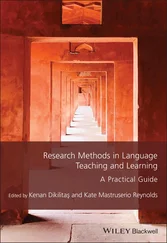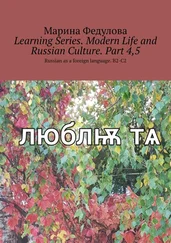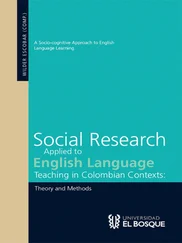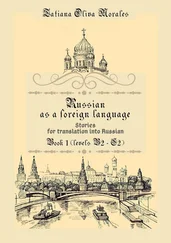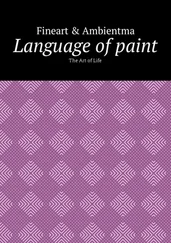In recent decades, educators such as Horst Rumpf, Hartmut von Hentig, Christian Rittelmeyer and Gert Biesta have offered visions of teaching and learning which offer a striking contrast to the paradigm of viewing education as a ‘hard science’ and which include a number of elements relevant to the concept of teaching as an art.78 In the area of foreign language teaching, Hans Hunfeld and Harald Weinrich stand out as the most prominent representatives of an alternative approach deeply rooted in a sceptical hermeneutic tradition, in which the experience of the richness and ambiguities of literature in a foreign language are accorded a central role.79
1.3 Anglo-American Traditions – William James
In the Anglo-American educational tradition, the concept of teaching as an art is generally considered to have a clearly defined origin.80 In 1892, the renowned psychologist and philosopher William James (1842–1910) was asked by Harvard University to give a series of public lectures on psychology to schoolteachers in Cambridge which were later published. In his lectures James draws clear distinctions between the insights which can be gained from the science of psychology and what is required in teaching:
I say moreover that you make a great, a very great mistake, if you think that psychology, being the science of the mind’s laws, is something from which you can deduce definite programmes and schemes and methods of instruction for immediate schoolroom use. Psychology is a science and teaching is an art; and sciences never generate arts directly out of themselves.81
He is clearly sceptical about the value of psychology in regard to the practical needs of his audience:
To know psychology, therefore is absolutely no guarantee that we shall be good teachers. To advance to that result, we must have an additional endowment altogether, a happy tact and ingenuity to tell us what definite things to say and do when the pupil is before us. That ingenuity in meeting and pursuing the pupil, that tact for the concrete situation, though they are the alpha and omega of the teacher’s art, are things to which psychology cannot help us in the least.82
Yet, despite his reservations, James goes on to give a number of suggestions derived from experimental psychology, emphasizing the importance of establishing positive educational habits and a broad base of tacit knowledge through making the “nervous system our ally instead of our enemy.”83 At the same time, he continually makes clear that the implementation of the principles of psychology in the classroom does not, in the end, depend on theoretical knowledge, but the teacher’s artistry in teaching:
The genius of the interesting teacher consists in sympathetic divination of the sort of material with which the pupil’s mind is likely to be already spontaneously engaged, and in the ingenuity which discovers paths of connection from that material to the matters to be newly learned. The principle is easy to grasp, but the accomplishment is difficult in the extreme. And a knowledge of such psychology as this which I am recalling can no more make a good teacher than a knowledge of the laws of perspective can make a landscape painter of effective skill.84
James’ entire view of teaching is based on a deep respect for the sovereign role of the teacher and a sceptical evaluation of the possibilities of science in advancing educational practice. His own concrete elucidation of the concept of teaching as an art is thus defined by what he considers to be the clear limits of educational psychology in assisting teachers to become better teachers. From the perspective of the leading psychologist of his day, the injunction that “inventiveness and sympathetic concrete observation”85 and not the findings and methods of science were the basis of successful teaching, constituted an educational vision at the end of the 19 thcentury which was to have clear, practical ramifications in a number of reform movements at the beginning of the 20 thcentury in both the United States and Europe.86
1.3.1 Art and Education – John Dewey
In contrast to his contemporaries in the European reform movements in the first third of the 20 thcentury, the writings and work of John Dewey (1859–1952) continued to influence different aspects of educational thinking throughout the 20 thcentury.87 His evaluation of the role of artistic experience in education was highly influential in shaping the ideas of those leading contemporary educators such as Elliot Eisner, Seymour Sarason, Jim Garrison and Howard Gardner who have all developed their own concepts of the nature of artistry in teaching and learning. Dewey’s influence on educational thinking in this respect has also not been limited to the United States.
In his seminal work Art as Experience (1934) Dewey elucidated his understanding of what constitutes the nature of artistry:
An artist, in comparison with his fellows, is one who is not only especially gifted in powers of execution but in unusual sensitivity to the qualities of things. This sensitivity also directs his doings and makings. (…) In an emphatic artistic-aesthetic experience, the relation is so close that it controls simultaneously both the doing and the perception. Such vital intimacy of connection cannot be had if only hand and eye are engaged. When they do not, both of them, act as organs of the whole being, there is but a mechanical sequence of sense and movement, as in walking that is automatic. Hand and eye, when the experience is aesthetic, are but instruments through which the entire live creature, moved and active throughout, operates.88
Within this holistic view of artistic-aesthetic experience, he places a particular emphasis on the role of perception within the changing and dynamic artistic process:
An incredible amount of observation and of the kind of intelligence that is exercised in perception of qualitative relations characterizes creative work in art. (…) The real work of an artist is to build up an experience that is coherent in perception while moving with constant change in its development.89
For Dewey, such artistic activities and processes were not limited to the domains of those working in the fine arts; he considered them to be central to all human experience. He thus argued that viewing artistic and aesthetic realms of experience as existing separately from the everyday realities of people’s lives pointed to a fundamental misunderstanding of their potential relations:
The hostility to association of fine art with normal processes of living is a pathetic, even a tragic, commentary on life as it is ordinarily lived. Only because that life is usually so stunted, aborted, slack, or heavy laden, is the idea entertained that there is some inherent antagonism between the process of normal living and creation and enjoyment of works of aesthetic art.90
In his foreword to the writings of the renowned art teacher Henry Schaefer Simmern, he explains what he views as the guiding principles underlying artistic processes in teaching and learning:
The first of the principles to which I would call attention is the emphasis upon individuality as the creative factor in life’s experiences. (…) This creativity is the meaning of artistic activity – which is manifested not just in what are regarded as the fine arts, but in all forms of life that are not tied down to what is established by custom and convention. In re-creating them in its own way it brings refreshment, growth, and satisfying joy to one who participates.
Accompanying this principle, or rather inseparable from it, is the evidence that artistic activity is an undivided union of factors which, when separated, are called physical, emotional, intellectual, and practical – these last in the sense of doing and making.91
Читать дальше

